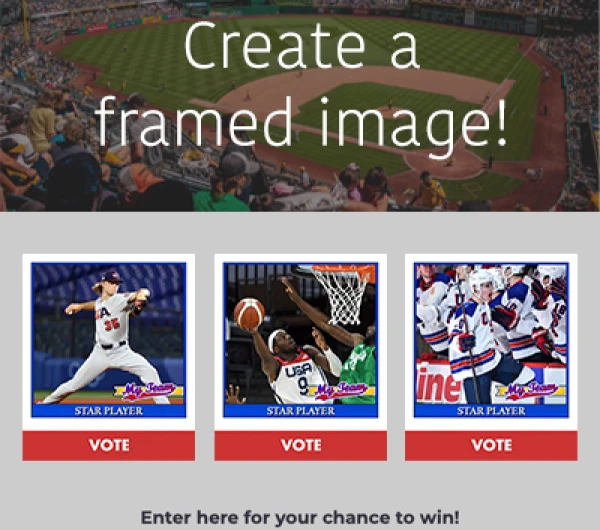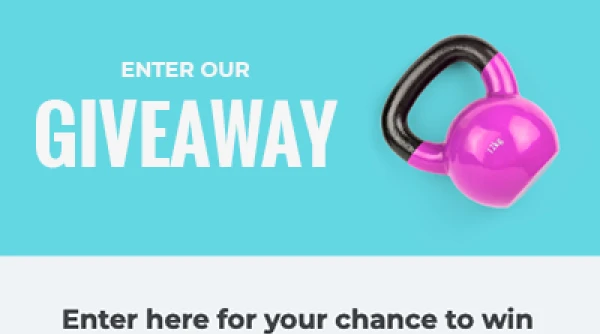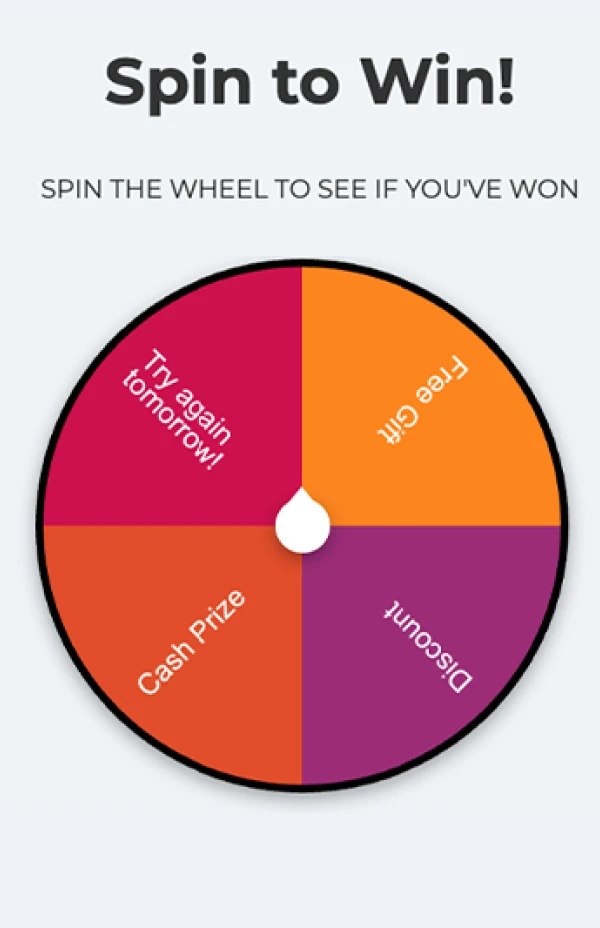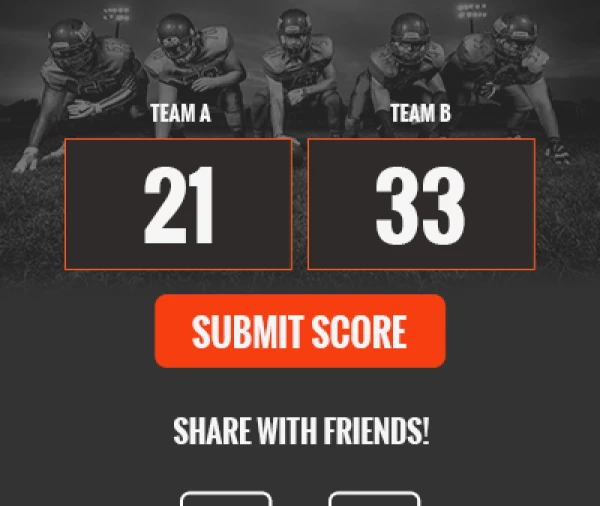The big December marketing push is here! But there's no need to panic. You've still got time to build the kinds of lead-generating marketing campaigns that will give your brand momentum well into the new year -- and beyond. We’ve pulled together a comprehensive guide right here, with everything you need to launch a holiday marketing campaign -- or two. We’ve also got a collection of free campaign templates and other resources to help you meet your holiday marketing goals. And if you read our recent post about the importance of holiday marketing efforts, you already know that data collection increases by 73 percent during the holidays. Ready to create a holiday marketing campaign?
Step 1: Set a Goal
Before you create your campaign, you need to decide what you want to achieve.Here are some broad goals we see among ShortStack.com users:
- Increase sales
- Increase brand awareness
- Promote a new product or service
- Boost user engagement
- Gather user feedback or content
- Develop brand advocates
Once you’ve decided on your big-picture goals, set smaller, SMART goals -- goals that are specific,measurable, attainable, relevant, and timely. Why? The more specific you are, the easier it will be to gauge whether your goals have been met.Here are just four examples of SMART goals:
- Use a photo-vote contest to collect 100 pieces of user-generated content (UGC) by December 10, 2016; here’s an example of a UGC campaign.
- Use a multi-day giveaway to add 500 new followers by December 18, 2016; here’s an example of a multi-day giveaway that will keep people coming back day after day. (Today’s live training also walks you through how to build this kind of campaign; we’ll repeat it for the next two weeks.)
- Use a coupon to generate 500 sales by December 20, 2016; here’s an example of a downloadable coupon campaign.
- Use our Event template to motivate 150 people to visit your store by December 23, 2016; here’s an example of an event promotion campaign.
Step 2: Create Your Offer
The “offer” you build your campaign around is the focus of your efforts. An offer can be a prize, a discount coupon or a resource (like an ebook, whitepaper, webinar, etc.). Spend some time thinking about what kind of prize or resource will attract your ideal customer. For example, if you’re courting small business owners, an ebook about how to use social media for marketing might be tempting. If you want more women to come to your store, a coupon might be the way to go.If the offer is a prize, give some consideration to what you’re giving away.For example:
- Be audience-specific. One of the biggest mistakes companies make is to host a generic “win an iPad” giveaway. You might gets lots of entries, but they won’t necessarily be your target audience.
- Give away several “inexpensive” prizes. We’ve seen companies get lots of attention by hosting something like the option to test-drive a car, taste-test a new food, or a cooking lesson from a famous chef.
Step 3: Build Your Holiday Campaign
While there are lots of campaign-building platforms out there, we always recommend ShortStack.com! Once you’ve set up your account, you’ll have access to more than 90 professionally designed templates, including the 10 that we designed just for the holidays. The type of campaign you build will determine the next steps, but basically they go like this:
- Choose a template.
- Choose the type of campaign you want to build (photo vote, discount, newsletter signup, landing page with resource, etc.).
- Edit the template -- images, form fields, etc. -- to reflect your brand. Check out this post with tips about how to create designer-quality images for your campaigns.
- Write rules. If you’re hosting a giveaway, this step is a must do. Make sure your rules include the following verbiage and other details:
- “No Purchase Necessary”
- “Purchase does not enhance chance of winning”
- “Void where prohibited”
- Details regarding non-monetary consideration
- The identity of the host/promoter
- Entry procedures with beginning/ending dates, including time and time zone
- Eligibility requirements
- An explanation of all methods of entry
- A clear description of the prize(s); certain states have stricter regulations (see examples at the end of this document)
- Date winner(s) will be chosen and notified
- Judging criteria must be clear and sponsor should be able to show how the winner was determined based on objective criteria
- Method of selecting a winner (to avoid any appearance of impropriety, it is recommended that sponsors avoid conducting their own drawings or determining the winners of their own contests)
- Publicity rights regarding use of Winner’s information (Sponsor should obtain written consent from Entrant to ensure compliance with state laws)
- Publicity rights regarding use of Participant’s information (Sponsor should obtain written consent from Entrant to ensure compliance with state laws)
- Liability limitations
- Odds of winning
- Physical address, not a PO Box
We’ve written extensively about what to include in social media contest rules, and even have a template that outlines everything you need to include.
Step 4: Create a Promotion Plan
The success of your campaign depends on how you promote it. If you’re giving away a trip to Paris or VIP access to a Taylor Swift concert, word will get around and your campaign will get plenty of attention. If your prize is more modest, you’ll need to create a comprehensive promo plan.
Some steps you’ll want to take include:
- Install a website header notification bar; we use Hello Bar.
- Add website sidebar display ads
- Use popup notifications
- Add calls-to-action footer images on blog posts
- Update social media platform cover photos with details about your campaign
- Send an email blast to your subscribers (make sure the subject line is attention-grabbing)
- Write a blog post
- Post a link to your campaign on Facebook, Twitter, Instagram, Google+, etc.
- Pay for some advertising on Facebook, Twitter, YouTube, Google Adwords, etc.
- Publish a press release
- List your offer on giveaway sites -- this blog post has an extensive list of options.
- Consider embedding your Campaign on your website so that you leverage your existing website visitors.
If you want even more tips, including some that focus on ShortStack’s unique sharing features, check out one of our most popular resources, “46 Ways to get the Word Out About Your Campaign.”
Step 5: Test and Publish Your Campaign
Once everything is in place -- you’ve established your goals, created your offer, designed your promotion plan (and have all the images, ads and posts created or in the pipeline) -- you’re ready to launch.Make sure you have someone who isn’t too close to the project test your campaign for you, including having them fill out forms. If you built your campaign with ShortStack you can be sure it’s already mobile-ready but if you used any other platform you’ll want to test the campaign on mobile devices, too, since we know mobile is increasingly how people access the internet.
Step 6: Measure and Analyze the Results of your Campaign
What happens after your giveaway is over is just as important as the actions you take before and during. Measuring and analyzing the data you collect are two of the most important steps in this process (leveraging the data, which we cover in the final step, is another one).Once you’ve collected leads, you’ll want to make them as useful as possible.
First, eliminate low-quality leads from your list. Delete email addresses from people who didn’t confirm their email address and/or giveaway confirmation emails. You don’t want these email addresses anyway since they’re probably fake accounts or otherwise not valuable to you.
Next, segment your new list. A properly segmented list is a profitable list. Now that your campaign is over and you’ve reduced your email list to only the most active and qualified leads, it’s time to segment the list. Each business has different segmentation filters that benefit them the most. Some filters include age, gender, industry, their relationship to your business (are they already a customer of yours, or are they on another one of your other email lists?), etc. Geography is another popular filter. Many international clothing companies, as just one example, find that segmenting their list by zip code is crucial. If they don’t take the time to do this, they could end up sending messages promoting their new summer apparel to people who live in Australia.Once you know how you want to segment your list, you’ll be prepared to craft different types of messaging. This is the beauty of segmenting your lists. The more personalized and refined your future messaging to your giveaway entrants is, the more effective your messages will be.
Then, share a relevant offer. After giving people a resource, or a chance to win something special from your brand, give them even more. When your campaign ends, share an exclusive, just-for-those-who-entered offer. And be sure to customize it to appeal to your entrants.
Step 7: Make a Plan to Leverage the Data
As you plan out next year’s marketing efforts, look for ways to leverage the data you’ve collected during the holidays. Look at your lead data through an analytical lens. The amount and the quality of the data you’ve collected can help you fine-tune future campaigns.
Here are just two ways to use the data you’ve collected:
As a conversation starter. One of the best examples we’ve seen of a company that kept the conversation going through the data they collected from a promotion was when loan servicer, Great Lakes, used a Facebook giveaway to help their customers learn more about student loan borrowing. Great Lakes promotion featured a quiz with five questions relating to student loans. Fans were not required to take the quiz in order to enter the promotion, but the educational questions combined with the fact that everyone loves a quiz, attracted their entrants to participate. While Great Lakes grand prize was a big one -- a $6,000 payment towards a student loan -- they closely monitored their quiz answers and used that to craft their social media and email marketing messages to their followers. They were even able to provide resources to help address the questions they were seeing from their followers.
To offer something exclusive to your new fans and followers. Even though email marketing is still a majorly successful communication tactic, people are still inundated with emails every day, and marketers still need to find a way to stand out in the crowd. Exclusivity is a great way to incentivize your entrants and to get a little more out of your fans than you previously would have.Let’s say you’re a small business that ran a promotion where you asked fans to provide their email address in exchange for a chance to win a prize. You include a link that suggests they subscribe to your email list….which one sounds better?
- Subscribe to our email list!
- Subscribe to our email list and receive a free gift!
Obviously receiving a free gift is much more enticing than simply subscribing. Exclusivity instills excitement for your product, and excitement for your product builds brand loyalty. Loyal fans means loyal customers! If you want to learn more, here are seven other ways to leverage the data you’ve collected from your fans.If you have any questions about your holiday campaigns, email us: theteam@shortstacklab.com.
About the author
Dana Sullivan Kilroy is a communications professional with more than 20 years of experience delivering compelling content. Her work has appeared in national, award-winning publications and sites, including: The New York Times, The Los Angeles Times, The Wall Street Journal, USA Today, and Fast Company, Inc.
Recent posts
Go back to blogGet marketing tips straight to your inbox
Launch an irresistible giveaway. Get started for free.
Join 630.000+ marketers that are boosting engagement and sales.













